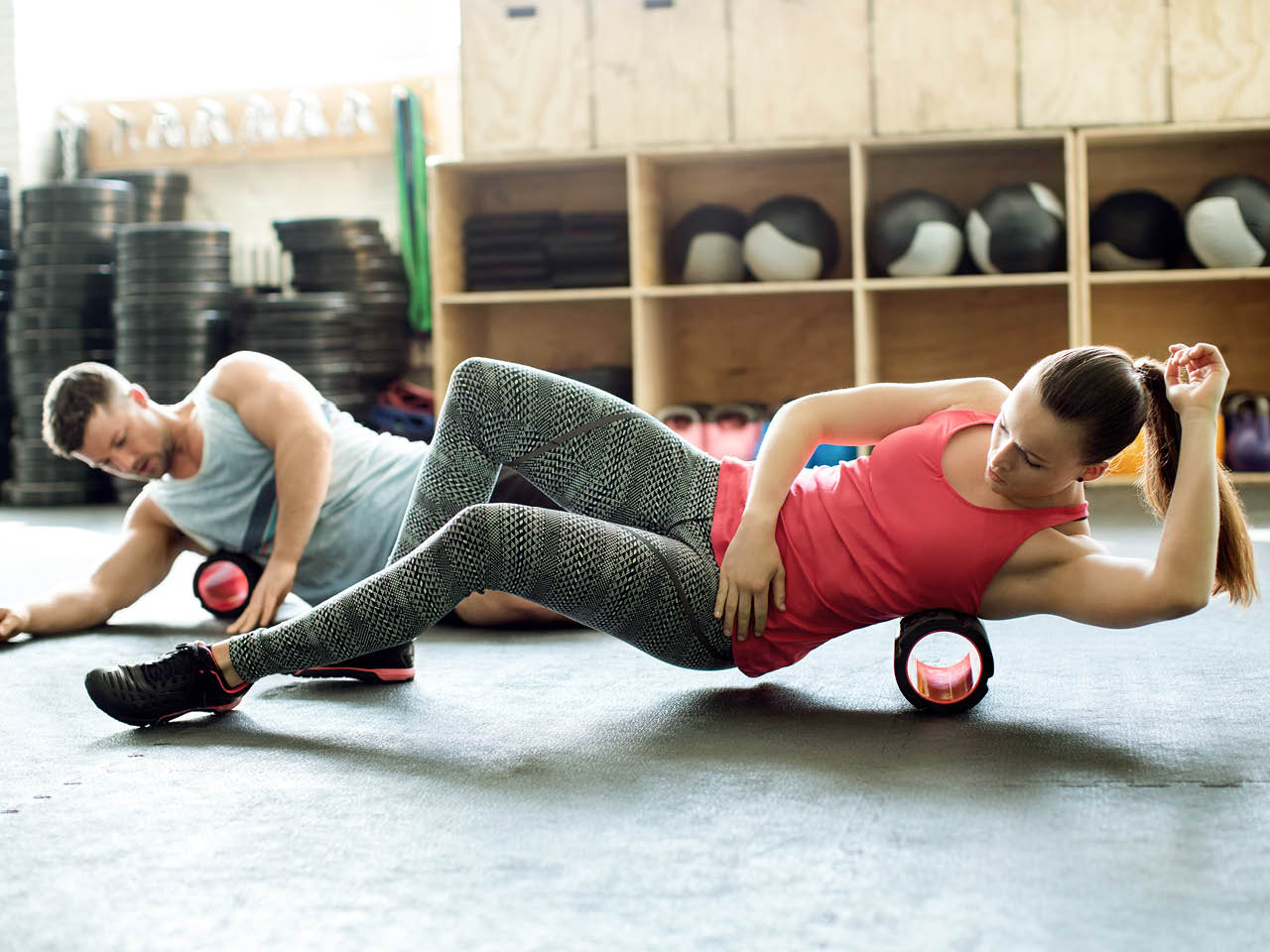
Foam rollers are great tools for improving range of motion before a workout and easing soreness as part of the cooldown after exercise. Foam rolling is sometimes known for “hurting so good.”
What Is A Foam Roller Used For?
Using a foam roller before or after exercise can help your body to achieve myofascial release, the process of separating muscular fibers and re-establishing the integrity of the tissue, therefore allowing the muscles to separate, relax, and become more flexible. It is great to do before a workout to prepare the body. Using a foam roller can lengthen and warm your muscles, which can improve performance. It is also a great idea to foam roll after a workout to help with recovery, increase flexibility, and reducing Delayed Onset Muscle Soreness (DOMS).
What Types Of Foam Rollers Are There?
Rollers come in different densities. Make sure you’re re using an appropriate foam roller. One that is too firm or textured can cause bruising or further injury.
Should I Use A Foam Roller?
Sometimes people will use a foam roller because they have heard about it from a friend or they have seen others at the gym using it. Sometimes simply stretching or massaging the area is actually best and will lessen risk of injury. When done improperly, foam rolling can actually hurt you (and not in a good way).
Foam Rolling Safety
Before Foam Rolling
Address your knots prior to foam rolling. Attempting to use a foam roller on knots can actually just compound and worsen them. You can release the knots with a tennis ball by applying sustained pressure to the area for 1 to 5 minutes or until you feel a release. Try to get the knots out before hitting the roller.
During Foam Rolling
The technique for using a foam roller is simple. Position the roller directly under the muscle or area you want to reach and gently roll back and forth on it. Take care not to roll over any joints.
For hamstrings, position the roller under your legs, just above the backs of the knees. Press your hands into the floor to lift your rear off the ground and slowly roll back and forth along the length of your thighs.
For calves, move the roller below the knees and roll to just above the ankles and back.
For quads, turn onto your stomach and place the roller under your thighs. Prop yourself up on your elbows before you roll back and forth.
If you feel a knot or trigger point, stop when you roll onto it and press into the roller for 20 to 30 seconds to help break it up. Note that you shouldn’t feel any pain when rolling. Pain could be a sign of injury that needs a doctor’s attention. If you find yourself rolling for more than 20 minutes without relief, you may have a larger problem you need to address. You should only be spending about 30 to 90 seconds on a muscle group. If you still aren’t feeling relief, it might be time to see your physician or a reputable massage therapist or physical therapist.
Always stick to rolling your muscles and stay away from your joints. If you have a history of lower back pain or previous injury, avoid that area. When in doubt, stick to your legs, glutes, and middle back and shoulders.
After Foam Rolling
After foam rolling, allow 24 to 48 hours before focusing on the same area again. As always, drink plenty of water, get enough sleep, and eat clean. This will help to flush your system and fuel your muscles more effectively. Like any other recovery method, find what works for you. Be safe with your movements and target locations, and stop if you feel something isn’t right.
